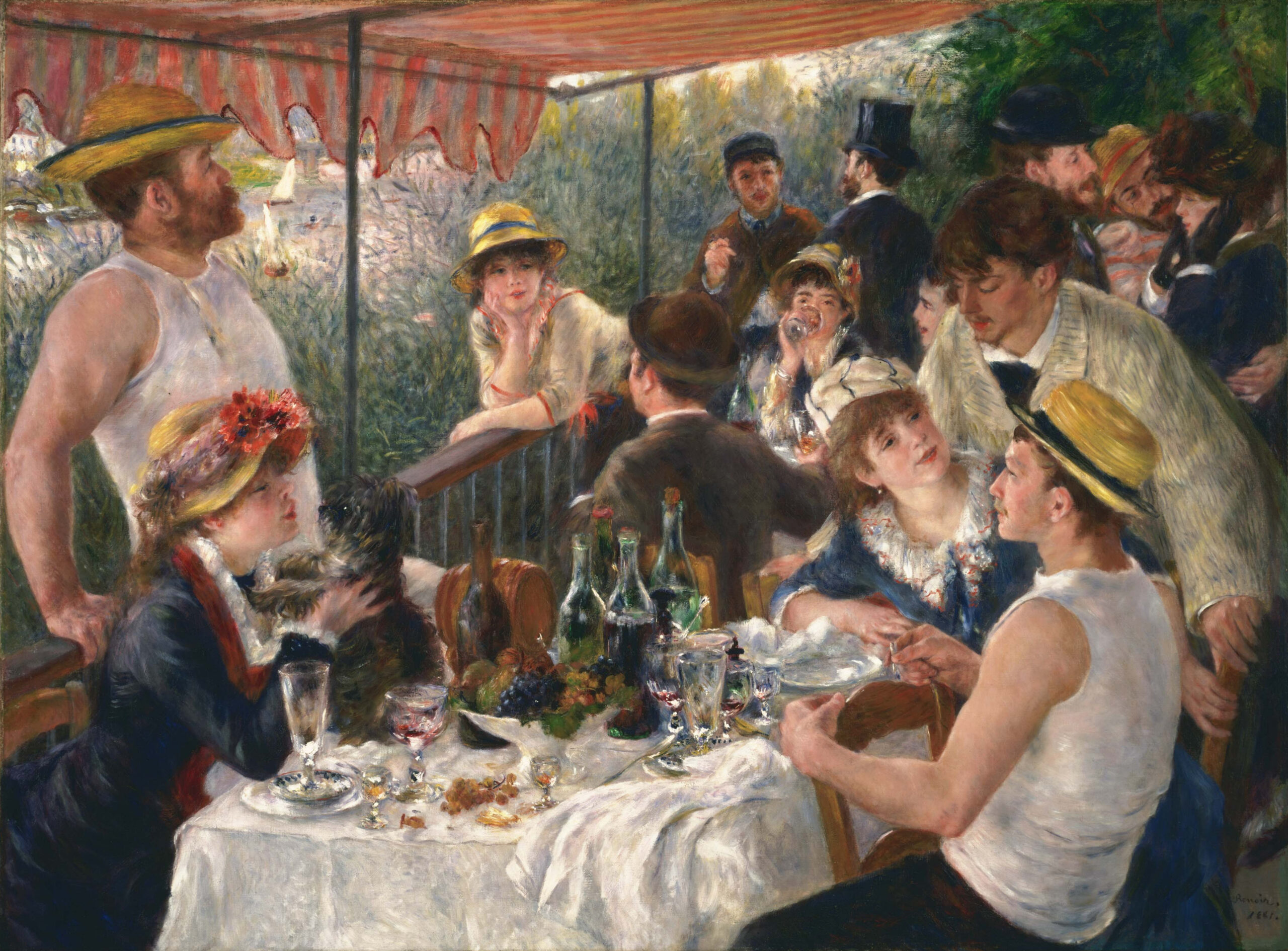Renoir – Luncheon of the Boating Party
A dreamy afternoon in the 1880s. Dappled light and soft faces. Good company. There are paintings that immediately take you to a place. This place is one of convivial company, plenty of food and drink, a warm lazy summer afternoon and relaxed interaction.
You can hear the clink of glasses and cutlery and the low hubbub of conversation, interspersed with an occasional yap from the dog.
Most of the men are dressed as if they had just finished action on the boat. The man in the top hat at the back, and the man in the centre in his brown jacket have perhaps met the party here for their midday meal.
They are mostly engaged with each other in some way. Only the man standing up on the left is looking away, looking up, pondering the moment. Is it moments like this that make up a happy life. Moments of company, good food, good cheer, a dreamy hazy afternoon near the water, with soft light and sails. Yes there is more to life; but these are moments to be cherished, nevertheless.
The women are beautiful. Most have their lips slightly parted, their attitude languid and serene. The colours are gorgeous: deep clarets, reds on ribbons and flowers, rich blues, pinks in the water and the yellows of the straw hats. All of the hats are wonderful – particularly those on the women.
The table is a triumph: dappled folded material, glass glinting in the light, fruit. And although it forms the foreground, our interest goes to the people – the faces of charm, beauty, and vitality.
Two men are flirting with the lady on the right with her hand over her ears: a little forcefully, a little too close, and she covers her ears to signal she is no longer listening. But overwhelmingly, the scene is happy – even restful. The soft light under the jolly awning makes all faces beautiful, and the dappled light makes it dreamy.
From the left, the railing creates a strong diagonal which separates the painting into two parts, one filled with people and one almost empty. Peeking under the awning is the River Seine, the light dancing off the water and sails. The light bounces into the entire scene, every participant and every object reflects its liveliness.
The painting depicts Renoir’s friends. Let’s name the ones to the left of the diagonal:
Aline Charigot – unlike the other ladies, she is not engaged in conversation with a man, but with the dog. Renoir married her nine years later and they had three sons. Perhaps he was already interested in her and painted out the competition.
Louise-Alphonsine Fournaise and her brother Alphonse Fournaise, Jr. – the man responsible for the boat rental. As it is for someone in charge, he feels the responsibility – and is just happy that others are enjoying themselves, rather than placing himself in the middle of the action. He looks upward, serene in the moment.
An enduringly popular painting, Renoir has captured beautiful people enjoying good company and good times. Moments like this in life can be rare and fleeting, and we should recognise them when they come. The popularity of this painting is not just in its gorgeous execution, but in the warm, gentle and happy emotions it evokes.
Watch this commentary
More from Pierre-Auguste Renoir













Leave A Comment